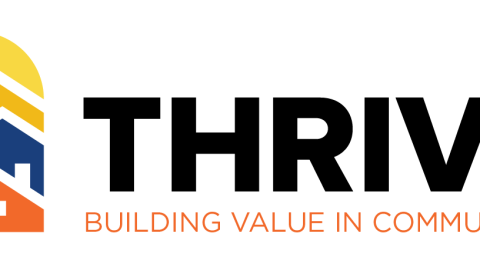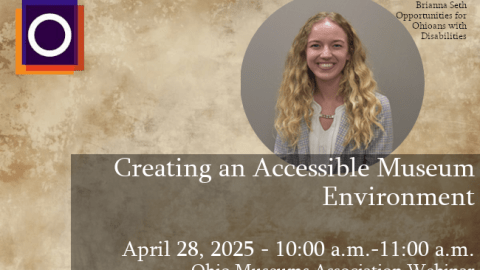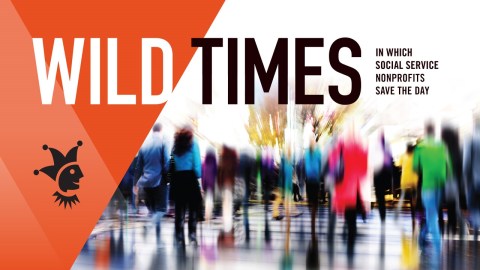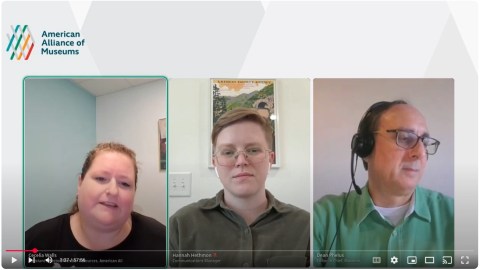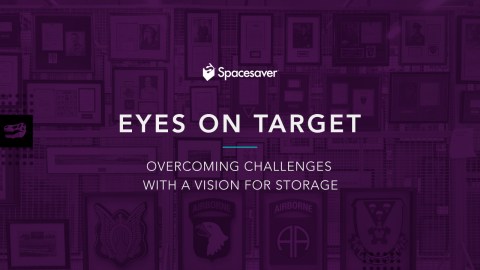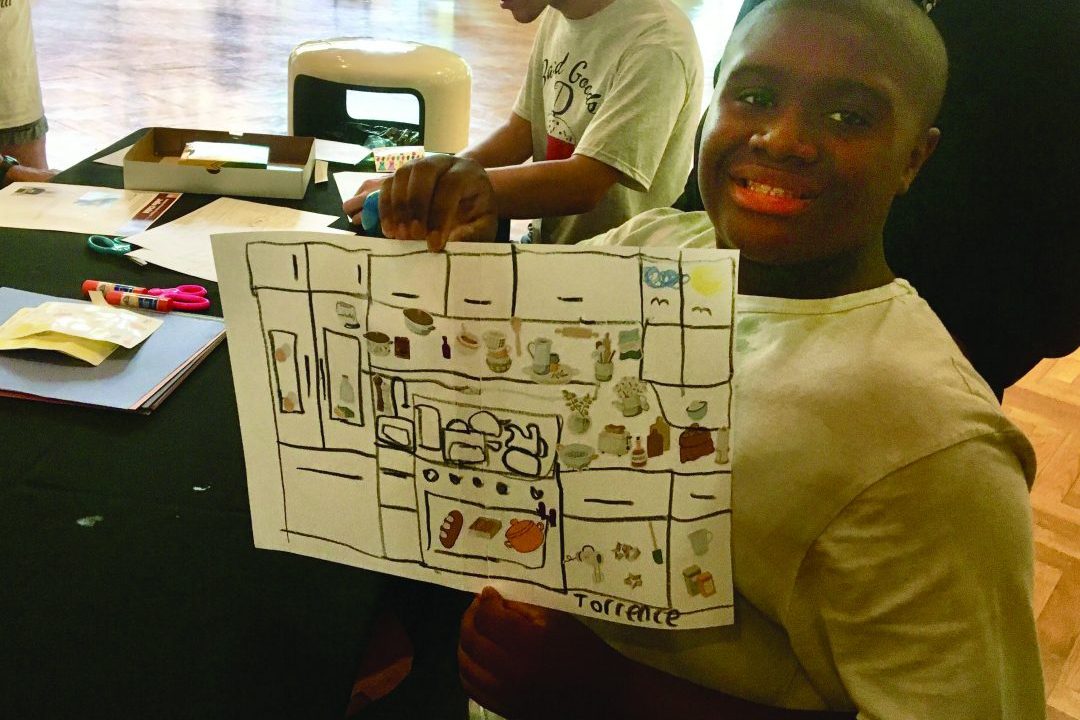
With its sensory-friendly programming for teens and adults, The Henry Ford is meeting a community need.
This article originally appeared in Museum magazine’s March/April 2025 issue, a benefit of AAM membership.
“Thanks for your patience and thank you for this gift. … My guy has so little to look forward to, and it will be the highlight of his day. Seriously, there is so little available for kids with ASD [autism spectrum disorder] after middle school and [as] young adults.”
This heartfelt message is just one of many we have received since launching our sensory-friendly program for teens and adults with ASD and sensory processing disorder (SPD) at The Henry Ford. Located in Dearborn, Michigan, The Henry Ford includes an indoor museum (Henry Ford Museum of American Innovation), an outdoor village (Greenfield Village), a tour of a working factory (the Ford Rouge Factory Tour), and a giant-screen movie theater. Currently, it has 367 full-time and 1,070 part-time employees who support its extensive collection on American innovation, ingenuity, and resourcefulness.
In recent years, museums have gradually increased sensory-friendly programming designed for individuals with ASD, SPD, and other neurodiversities. This reflects a growing number of individuals diagnosed with ASD, which now affects about 1 in 36 children, according to the Centers for Disease Control and Prevention.
Most sensory-friendly programming is geared toward children ages 12 and under and their families. These experiences feature social narratives (which use pictures and text to walk people through an upcoming visit), sensory maps (which highlight areas with sensory triggers like loud sounds and bright lights), quiet zones, noise-canceling headphones, and exclusive access time.
This is precisely the type of programming we have offered—and still offer—at The Henry Ford. Over time, we realized that focused programming for teens and adults could provide these individuals with a rich range of opportunities for learning, social/life/job skill development, and cultural enrichment. We decided to develop additional programming to meet these needs.
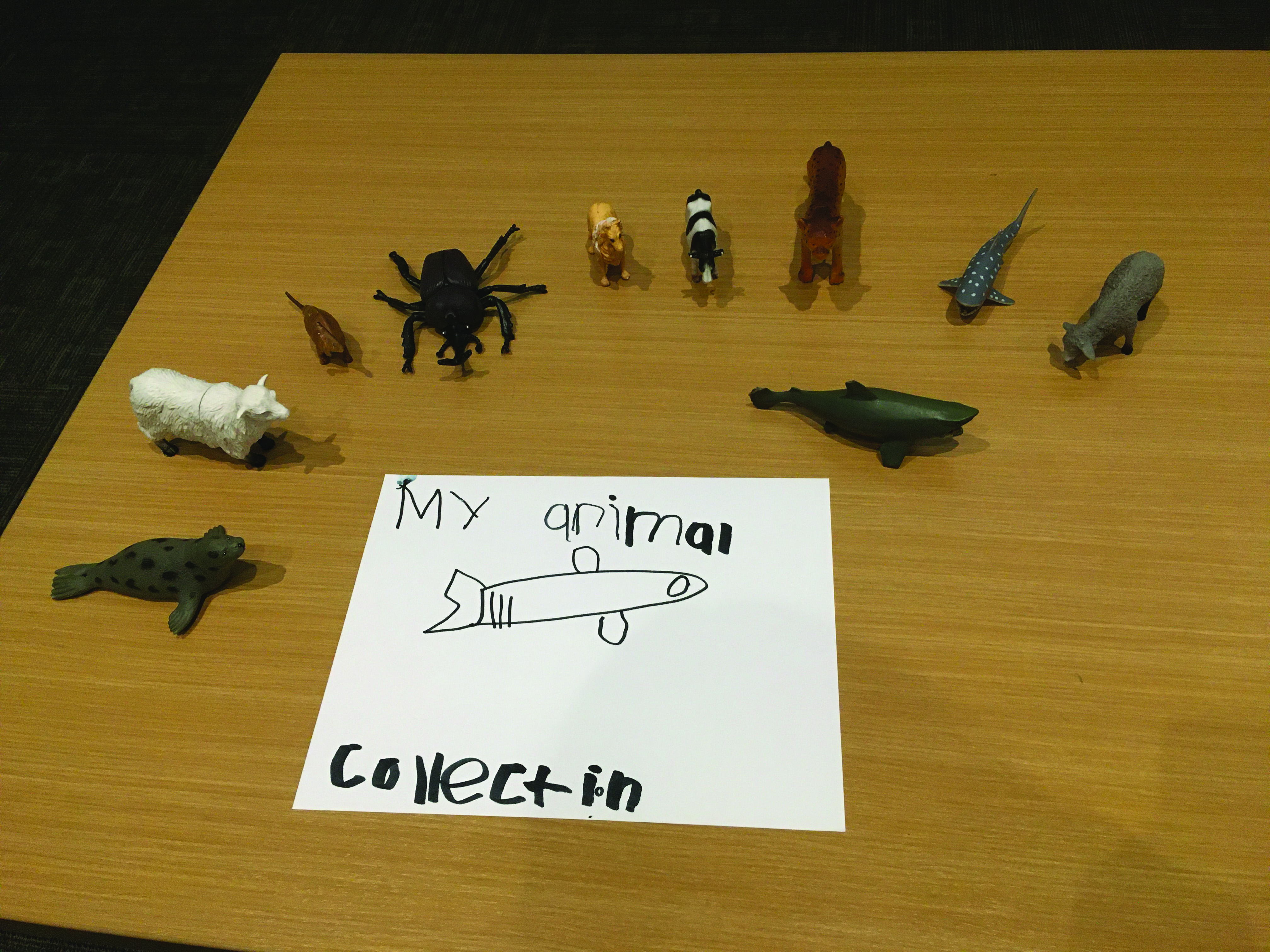
Getting Our Teen/Adult Program Started
Our journey began in 2016 with sensory-friendly events for all ages, which continue to include many of the program elements mentioned above. To guide our efforts, we formed an Autism Advisory Group that includes parents and teachers of individuals with autism, and individuals on the spectrum. This group highlighted the lack of opportunities for teens and adults. Feedback from families attending our
sensory-friendly events reinforced this need.
In response, we interviewed experts working with this audience, including a high school special education teacher and a college professor, and researched the few existing programs. We concluded that a small-scale program (less than 50 people, including family members) that offered direct interaction between staff and attendees would be most effective. We also decided that having themes (often connected to an exhibition) would help with planning, and our experts and families encouraged us to incorporate social time to help participants develop personal interaction skills.
With these insights in mind, we established two goals for our teen/adult programming: 1) provide opportunities for social skill development, parent/guardian enrichment, and expanded knowledge of topics covered during the program and 2) foster continued loyalty to The Henry Ford by offering a continuum of programming for families whose children have grown up attending our sensory-friendly programs.
Implementing these program goals and ideas posed some challenges, however. For example, since this program would likely need more direct staff interaction than most of our existing programming, we considered hiring an outside facilitator. But in the end, through a grant from the Institute of Museum and Library Services (IMLS), we were able to hire two part-time staff with experience working with people with disabilities.
During the pandemic, we introduced virtual programming for all ages, which helped inform today’s teen/adult offerings. The virtual programs, which we continue to offer occasionally, had themes, stories, crafts, movement activities, and social time. We also featured individuals on the autism spectrum and/or with other disabilities as guest speakers.
The virtual programs were well-received and, interestingly, many of our attendees were teens and adults. The guest speakers were a big draw for this audience. As one parent remarked about her child’s experience, “Seeing someone who is a success with autism was incredible for her. This is the first time that autism has been shown in a positive way with adult content. She left feeling empowered and hopeful.”
This success informed the design of our first in-person program designed exclusively for teens and adults in the fall of 2021.
The Program Evolves
At the outset, we surveyed families on the email list for our general sensory-friendly programming, asking if they knew anyone who would be interested, if they had ideas for themes, and what day and time would work best. Based on these responses, we decided to hold our teen/adult programs on Sundays, typically from 3–5 p.m., a quieter time at the museum.
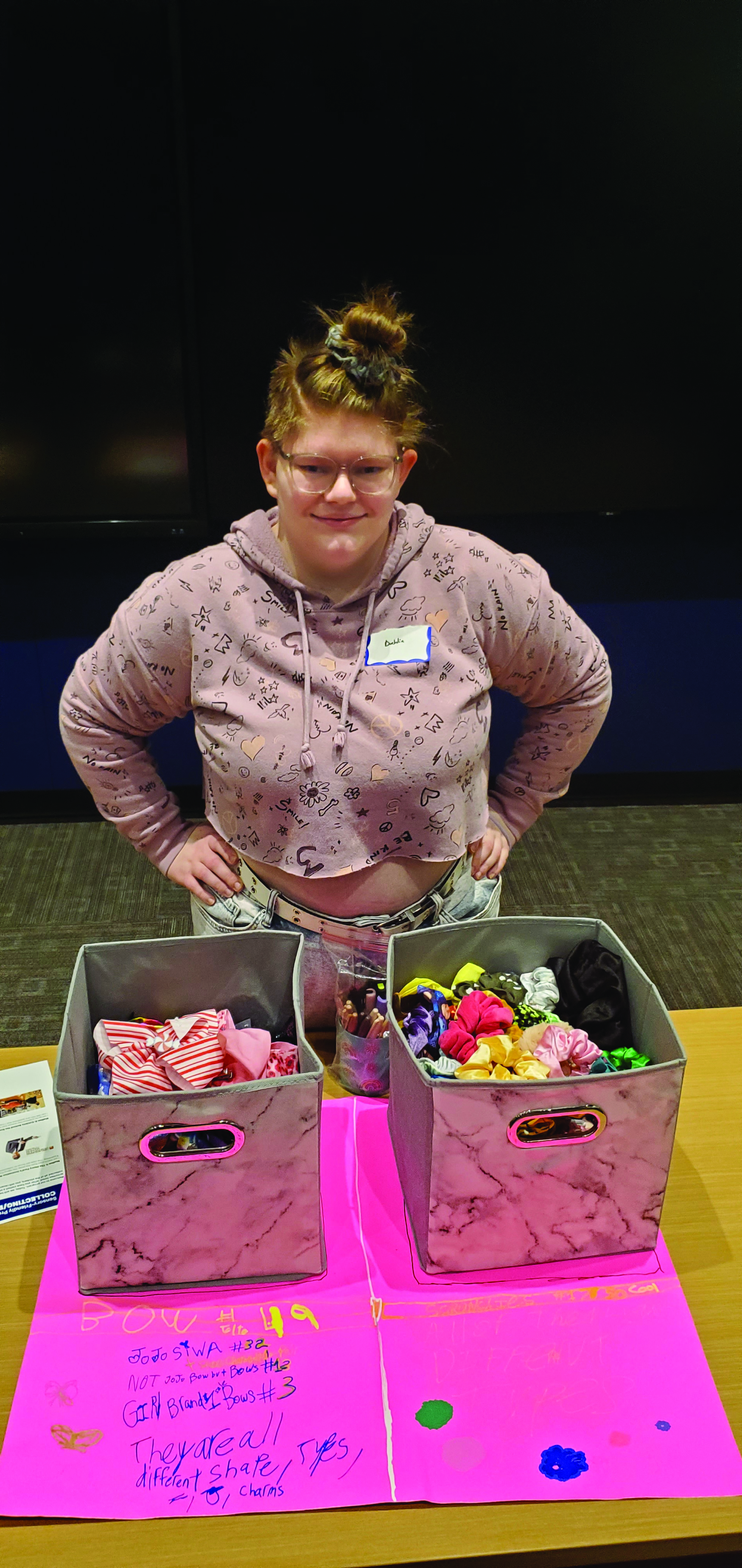
The theme for our pilot program in 2021 was trains and included a story, craft, scavenger hunt, and movie. Since then, we have offered four teen/adult programs annually, which have also included a visit to an exhibition and a guest speaker. Themes have included flight, cooking, dinosaurs, animation, and collecting/exhibiting. Also, thanks to the IMLS grant, these programs are free, providing much-appreciated flexibility for families who are unable to stay for the entire program.
For each program, participants receive a social narrative, which provides guidance on what to expect, and an event document featuring a short description of the program and photos of each activity. When attendees finish an activity, they receive a sticker (themed to the program) to place on the event document. Upon earning all of the stickers, they get a themed reward. Attendees and their families appreciate the sense of completion this brings.
As much as possible, we solicit feedback from the participants about topics of interest and feature some as guest speakers. For example, two of our attendees, passionate about animation, led drawing activities during a program focused on an exhibition of Disney movie costumes. Another spoke about his baking business during a program focused on a Julia Child exhibition. Additionally, during our collecting/exhibiting program, we asked attendees to bring in—and create exhibits of—their collections, which included plastic animals, toy trains, and hair scrunchies and bows.
We want to create a welcoming and safe space in which everyone can freely share their passions and interests. “This group allows [my daughter] to be herself, feel accepted, and be seen,” wrote one parent. “Thank you for always making us feel welcomed.”
Impact and Challenges
After each program, we survey participants on what they like about the program, aspects that could be improved, themes they would like to see in the future, and the program’s impact. Feedback has been overwhelmingly positive. Parents tell us that the program helps their teens and adults develop relationships, interact with their peers, and feel accepted—things that can be challenging for neurodiverse individuals.
Additionally—and perhaps unexpectedly—the programs have helped build a sense of community, among both the teens/adults and the parents. Many families return for subsequent programs, and it is heartening for them to see other familiar faces at each gathering. Parents share tips and resources, and the teens and adults have become more comfortable around each other over time. One parent shared that her daughter volunteered to be a guest speaker at a program, noting, “I was actually shocked she asked, as public speaking is not something she usually enjoys. [This] speaks volumes to her comfort level with the program.”
The program is not without challenges, however. Demand for this program is outpacing our capacity—a testament to its success. Each program reaches capacity within a couple hours of when we send out registration information. We limit the group size to less than 100 attendees (about 25 families) to ensure meaningful interaction, but turning people away is difficult when we know there is such a need.
Another challenge is the time and staff resources required to plan the activities and speaker(s), stickers and rewards, and other details. Expanding capacity for these programs would require additional staff, which presents financial hurdles.
Looking ahead, we will continue to offer this programming at least quarterly. It clearly fulfills a vital community need and is highly rewarding for all involved. We look forward to refining and growing the program as we move forward.
Caroline Braden is Accessibility Manager at The Henry Ford in Dearborn, Michigan. Reach her at carolineb@thehenryford.org.
Sidebar
Advice for Getting Started
Develop a consistent structure. We always have a theme, activities, an event document, stickers, and a reward, and we hold the program at the same time. Additionally, including guest speakers with ASD/SPD is particularly powerful and relatable.
Be flexible. Have a plan, but know that some things might not occur exactly as anticipated. At times, you will need to adjust to changing circumstances.
Form an advisory group. Engage with people in your community with ASD/SPD, as well as parents and teachers of individuals with ASD/SPD, to understand their needs and preferences. Also, look inside your institution: Are there staff who identify with this audience who could also help with the program?
Provide pre-visit materials for attendees. Social narratives and sensory maps will help participants understand what to expect.
Train staff on interacting with this audience. Provide information on behaviors to expect from attendees as well as tips for communicating. Consider bringing in staff from organizations serving this audience to assist with training. At The Henry Ford, we have worked with a range of external trainers over the years and created an electronic training module on interacting with this audience.
Start small and grow from there. Begin with small, manageable offerings like social narratives and noise-canceling headphones, and gradually expand to sensory-friendly events over time. If possible, keep the cost of your program low or free to attendees.
Solicit feedback. Conduct a post-event survey of participants and meet with staff for a post-program debrief. Use this feedback to refine and improve future events.
Other Sensory-Friendly Offerings at The Henry Ford
- Pre-visit planning materials (social narratives and sensory maps) on The Henry Ford’s website and noise-canceling headphones/earplugs available at the museum.
- Monthly sensory-friendly movies, where the lights are turned up and the sound is turned down.
- Early openings of exhibitions that include pre-visit planning materials, quiet zones, noise-canceling headphones/earplugs, and exclusive access time.
- Sensory-friendly events offered at large-scale public events, such as Hallowe’en and Holiday Nights in Greenfield Village.
- Virtual sensory-friendly themed programs that include a story, craft, movement activity, social time, and guest speakers.
Resources
Heather Pressman(ed.), An Accessible Past: Making Historic Sites Accessible, 2024
Emily Wiskera, Anna Smith, Tina Sue Fletcher, Lynda Wilbur, and Francis Yong Chen, Success on the Spectrum: Practical Strategies for Engaging Neurodiverse Audiences in Arts and Cultural Organizations, 2024
Heather Pressman and Danielle Schulz, The Art of Access: A Practical Guide for
Museum Accessibility, 2021
Beth Redmond-Jones(ed.), Welcoming Museum Visitors with Unapparent
Disabilities, 2024
